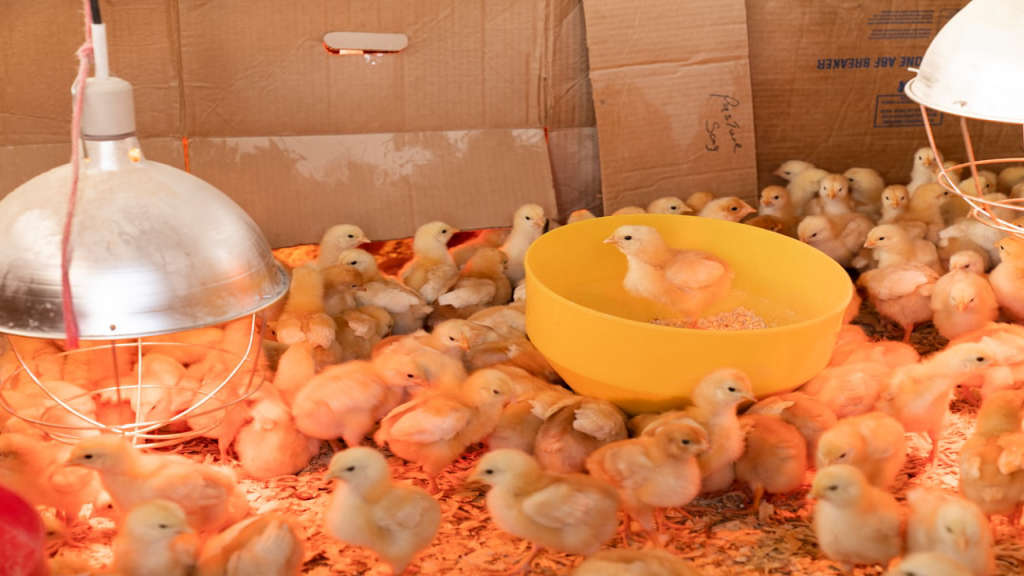As the global community faces unprecedented environmental challenges, the urgency for sustainable solutions grows. One promising approach is regenerative farming. This innovative practice goes beyond traditional agriculture, focusing on restoring soil health and enhancing biodiversity. By embracing these transformative techniques, we have the opportunity to cultivate a healthier planet for future generations.
Main Points
- Understanding the principles of regenerative farming.
- The benefits of soil health and biodiversity restoration.
- Real-world examples of successful regenerative farming initiatives.
- How individuals can support and promote these practices.

Understanding Regenerative Farming: Principles and Practices for Sustainable Agriculture
The landscape of modern agriculture is evolving rapidly. One of the most remarkable shifts is towards regenerative farming. This approach is not merely an alternative method; it embodies a philosophy aimed at improving soil health, enhancing biodiversity, and ultimately creating a sustainable future for our food systems. But what exactly does regenerative farming entail? Let’s delve into its core principles and practices.
Core Principles of Regenerative Farming
At its heart, regenerative farming focuses on revitalizing the health of ecosystems while simultaneously supporting economic and social vitality. The process may seem intricate, yet it is built on several foundational principles:
- Soil Health: The cornerstone of regenerative farming is fostering rich, living soils. Practices such as cover cropping and reduced tillage enhance organic matter and moisture retention, enhancing soil fertility over time.
- Biodiversity: Increasing the variety of crops and livestock can lead to a more resilient ecosystem. This diversity promotes pest control and increases plant health, reducing dependency on chemical inputs.
- Carbon Sequestration: Through the implementation of practices like agroforestry and composting, regenerative farming sequesters carbon in the soil, tackling climate change while enriching soil nutrient content.
- Holistic Management: A systems-thinking approach is crucial. Farmers need to understand the interconnections between crops, livestock, and the ecosystem, leading to better decision-making for sustainable practices.
Practices to Implement Regenerative Farming
While the principles form the theoretical framework of regenerative agriculture, implementing specific practices is essential for tangible results. Some practices that have proven effective include:
- Cover Cropping: Planting cover crops like clover or rye during off-seasons protects soil from erosion and adds nutrients when they decompose.
- Rotational Grazing: This method involves moving livestock between pastures to prevent overgrazing, contributing to healthier grassland and improved soil structure.
- Composting: Recycling organic materials into compost enhances soil fertility and water retention, decreasing reliance on synthetic fertilizers.
- Integrating Trees: Incorporating trees into farming systems—known as agroforestry—can help reduce soil erosion, provide shade, and improve biodiversity.
Challenges and Considerations
Transitioning to regenerative farming can be daunting. Farmers may face initial challenges such as increased labor requirements and the need for education about new practices. The doubt about whether short-term investments will yield long-term benefits can sow anxiety. However, many practitioners attest that the transition fosters a profound connection to the land and improved yields over time. It is essential to approach this journey with patience and an open mind, as the benefits often become evident only after consistent commitment.
In conclusion, understanding and implementing regenerative farming principles and practices is crucial for sustainable agriculture. As we grapple with the complexities of food production, adopting such methods can pave the way toward a more balanced and healthy future for our planet. Embracing regenerative techniques not only supports ecological integrity but also nurtures the farming community’s social and economic dimensions. The conversation around regenerative agriculture is only just beginning, and engaging with these ideas can help all of us play a role in a more sustainable world.

The Impact of Regenerative Agriculture on Soil Health and Biodiversity Enhancement
Regenerative agriculture has emerged as a promising approach to tackling some of the most pressing challenges in modern farming. It focuses on restoring the health of the soil while fostering an environment where biodiversity can thrive. But what exactly does this mean for both the land and the creatures that inhabit it?
Understanding Soil Health
The concept of soil health encompasses a variety of factors, including nutrient content, structure, and microbiome diversity. Healthy soil acts as a living system, teeming with microorganisms that play critical roles in breaking down organic matter and making nutrients available to plants. In regenerative agriculture, practices such as cover cropping, crop rotation, and reduced tillage contribute significantly to soil health. By minimizing soil disturbance, farmers can maintain the intricate web of life that promotes nutrient cycling and enhances resilience against pests and diseases.
Biodiversity and its Importance
Biodiversity refers not only to the variety of species present in an ecosystem but also to their relationships and interactions. A biodiverse farming system is more than a collection of different plants and animals—it’s about the connections between them. Regenerative practices, such as agroforestry and the integration of livestock, encourage a more diverse ecosystem. This increased diversity helps improve biodiversity, which in turn supports robust agricultural systems capable of adapting to climatic changes.
Key Practices in Regenerative Agriculture
Several practices define regenerative agriculture and play pivotal roles in enhancing soil health and biodiversity:
| Practice | Impact on Soil Health | Impact on Biodiversity |
|---|---|---|
| Cover Cropping | Prevents erosion and improves soil structure. | Supports a diverse range of microorganisms. |
| Crop Rotation | Enhances nutrient availability and reduces pests. | Encourages a wider variety of crops, improving genetic diversity. |
| Reduced Tillage | Maintains organic matter and soil integrity. | Protects habitats for soil-dwelling organisms. |
Challenges and Considerations
Despite its advantages, adopting regenerative practices is not without challenges. Farmers may face initial costs or learn new techniques that disrupt their conventional habits. Additionally, the transition to regenerative methods requires patience; benefits may not be immediately visible. However, the long-term gains in soil fertility and environmental stability are worth the investment.
Moreover, regenerative agriculture invites a rethinking of our relationship with the land. It challenges the notion of farming as purely industrial and encourages a holistic view that includes stewardship of both soil health and biodiversity. This holistic approach not only leads to more resilient farming systems but also promotes an ecosystem where nature can flourish.
Conclusion
As we grapple with the effects of climate change and environmental degradation, regenerative agriculture stands out as a beacon of hope. By prioritizing soil health and fostering biodiversity, we can create sustainable agricultural systems that benefit both farmers and the environment. This is not merely an agricultural trend; it is a necessary shift towards a more harmonious relationship with nature.

Conclusion
In conclusion, regenerative farming represents a hopeful path forward for our agricultural practices. It emphasizes the importance of nurturing the earth while producing food in a sustainable way. By prioritizing the health of our soil and ecosystems, we can ensure that future generations inherit a vibrant planet. The transition to regenerative methods may not be straightforward, yet it offers us a chance to heal the wounds inflicted on our environment. As we embrace these practices, we pave the way for a more balanced relationship with nature. This shift is not only necessary, but it’s also an opportunity to reconnect with the land and foster a thriving planet for all.
Frequently Asked Questions
What is regenerative farming?
Regenerative farming is an agricultural practice that focuses on restoring and enhancing the health of the ecosystem. It involves methods such as crop rotation, cover cropping, and reduced tillage to improve soil health, increase biodiversity, and promote sustainable food production.
How does regenerative farming benefit the environment?
Regenerative farming benefits the environment by improving soil quality, increasing carbon sequestration, enhancing water retention, and reducing the need for synthetic fertilizers and pesticides. This holistic approach leads to healthier ecosystems and mitigates climate change.
Can regenerative farming be implemented on a large scale?
Yes, regenerative farming can be implemented on a large scale. Many farmers and agricultural organizations are adopting these practices to increase sustainability and productivity. While it may require a shift in techniques and mindset, the long-term benefits to both the environment and agricultural yield make it a viable option.